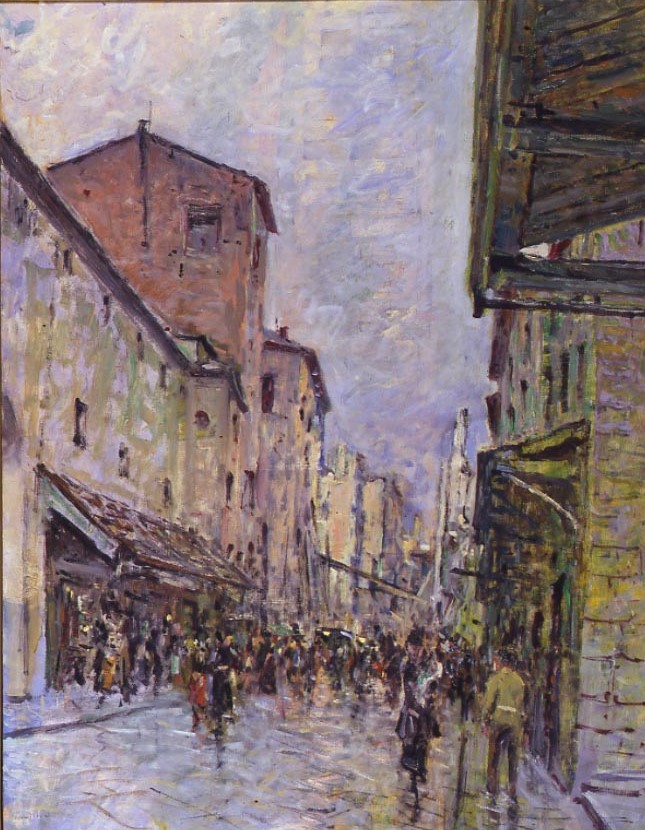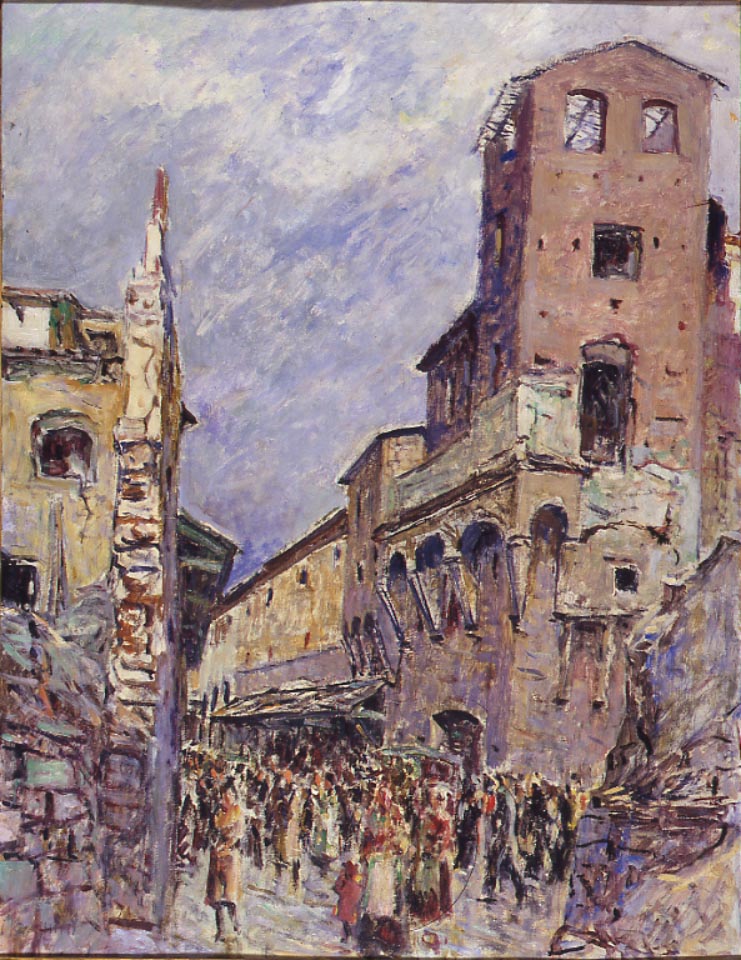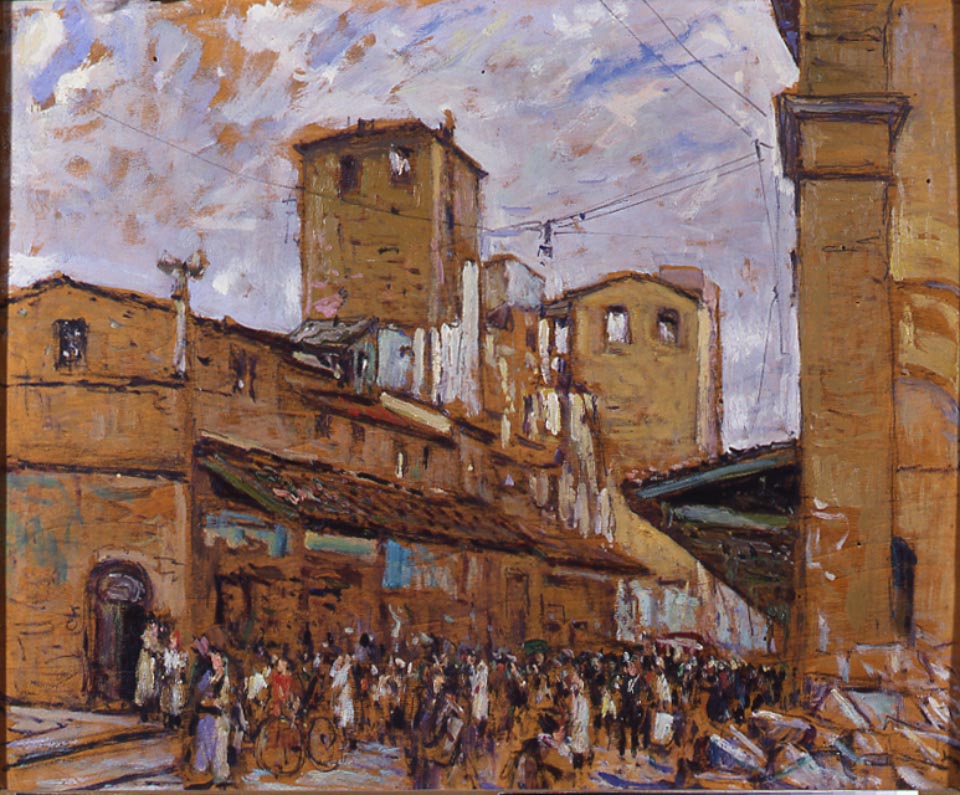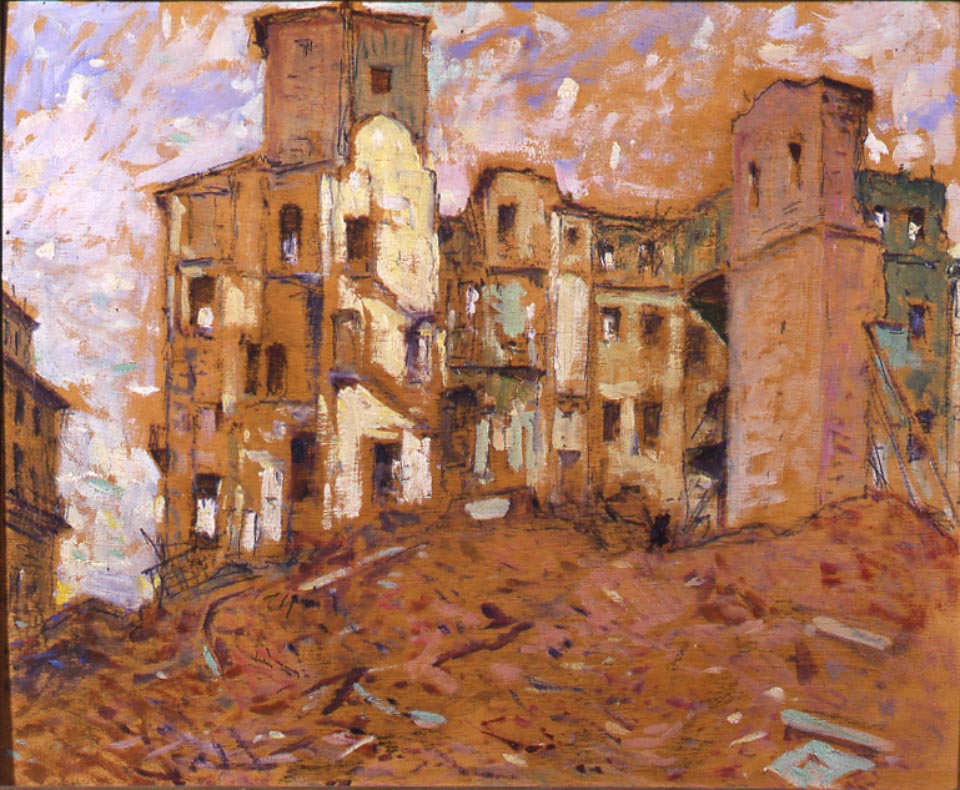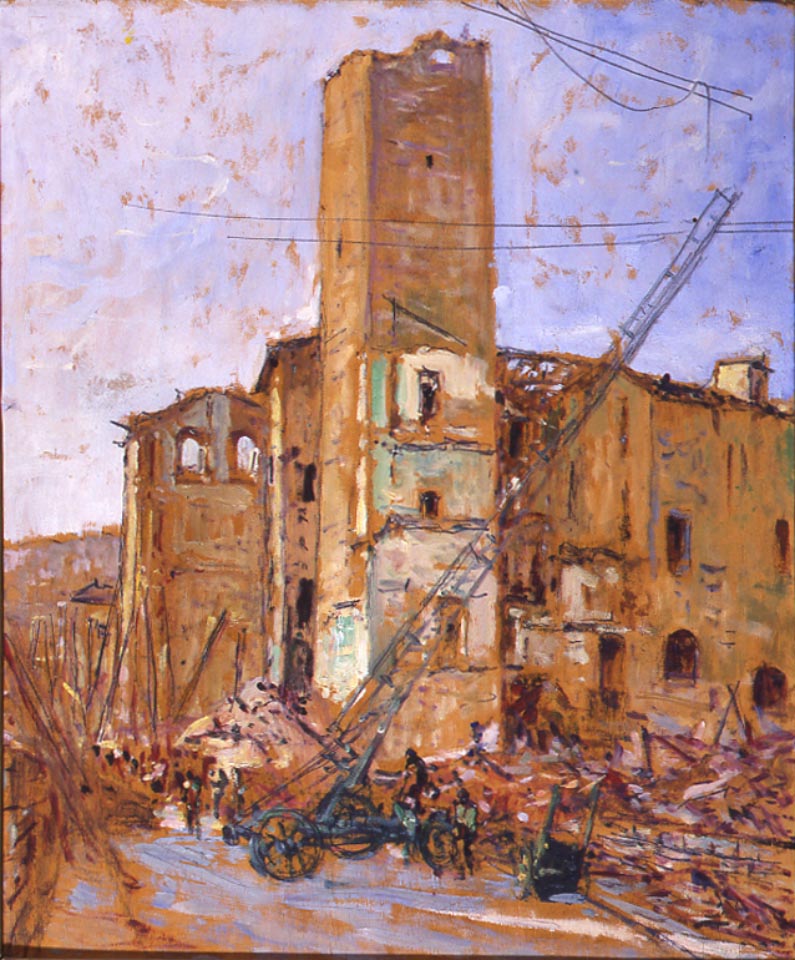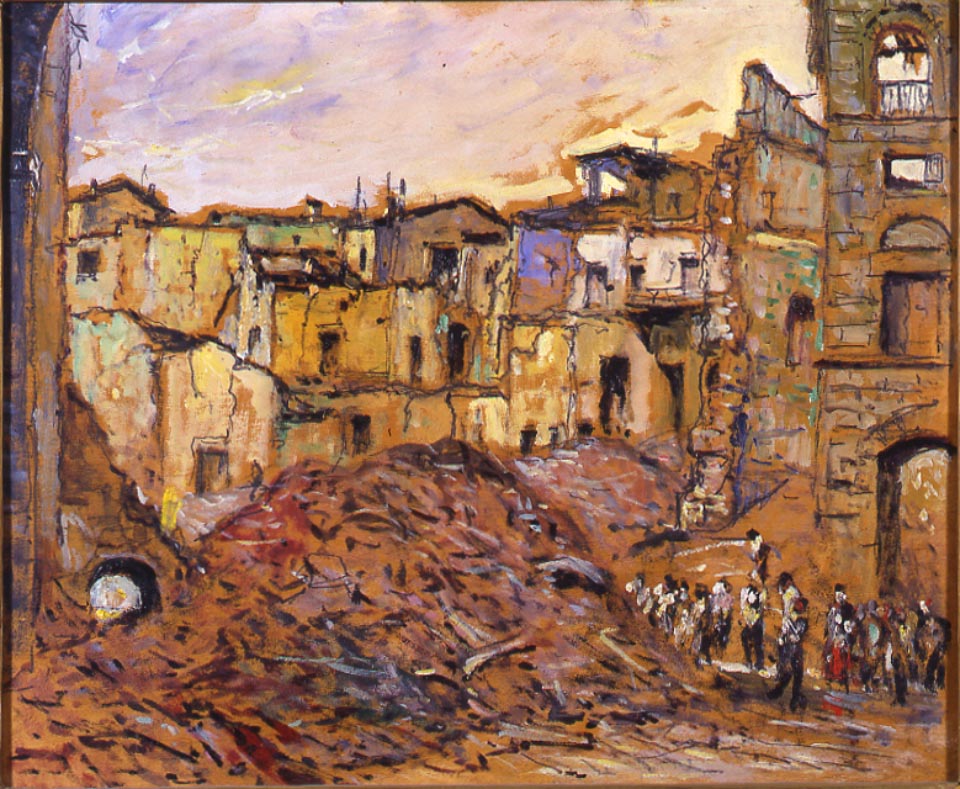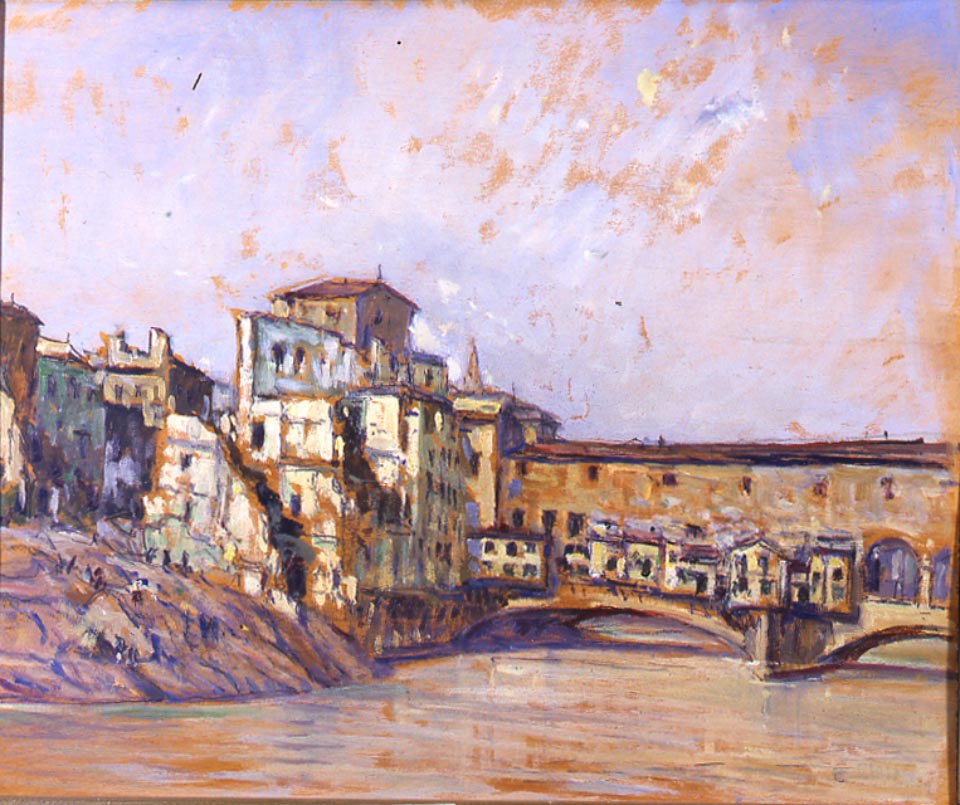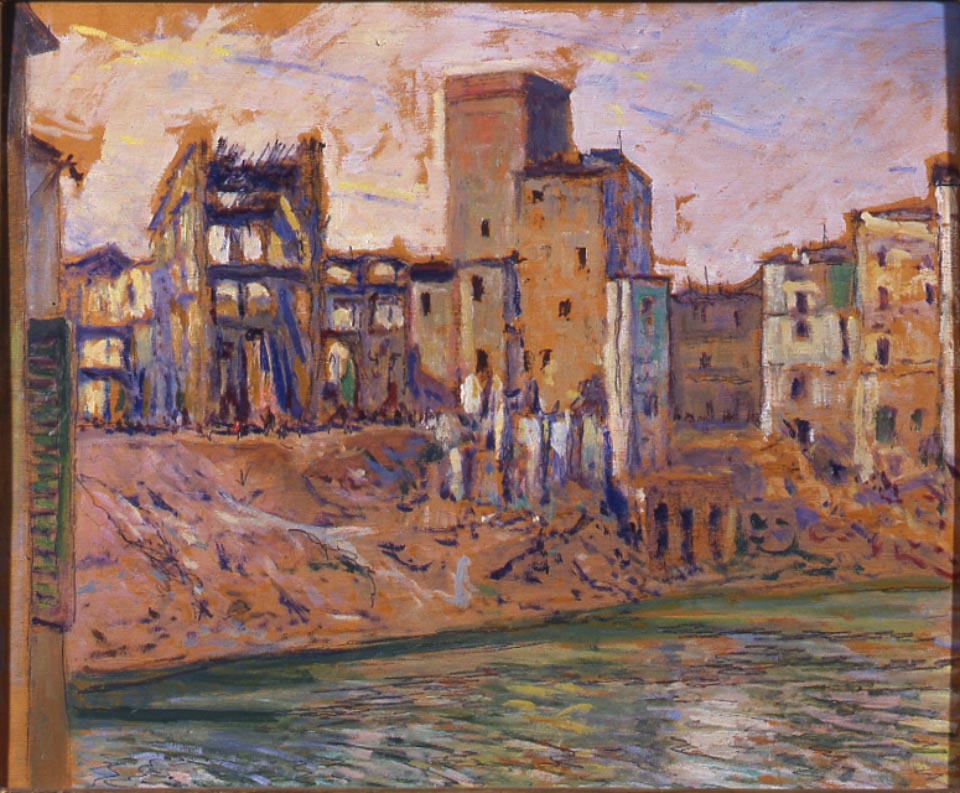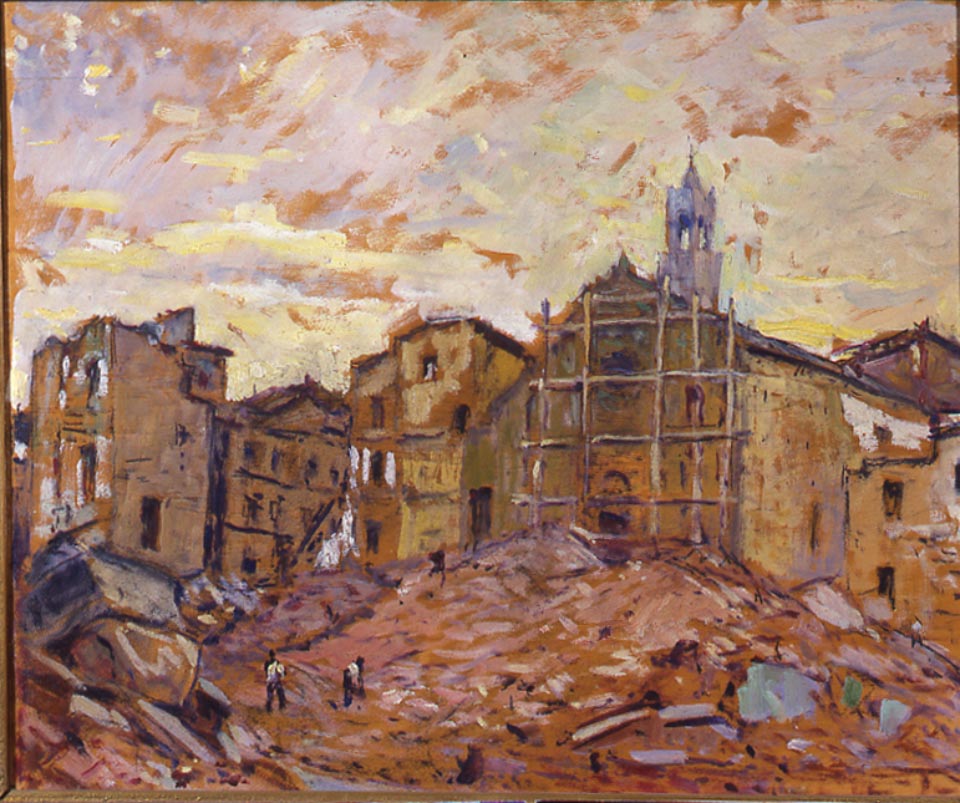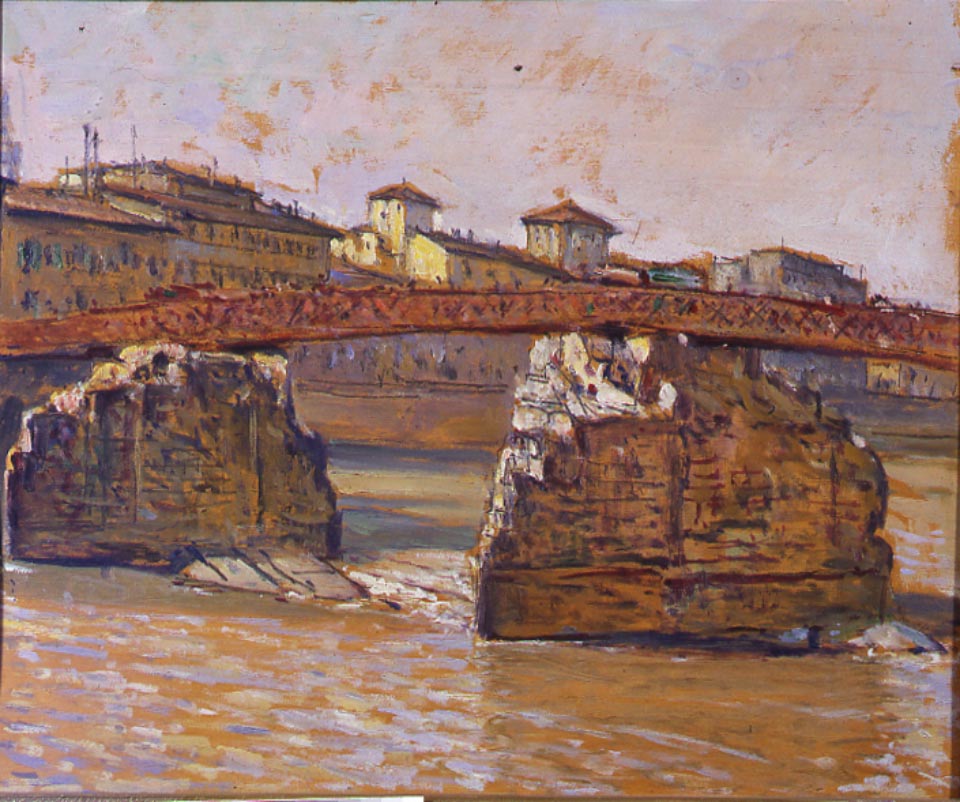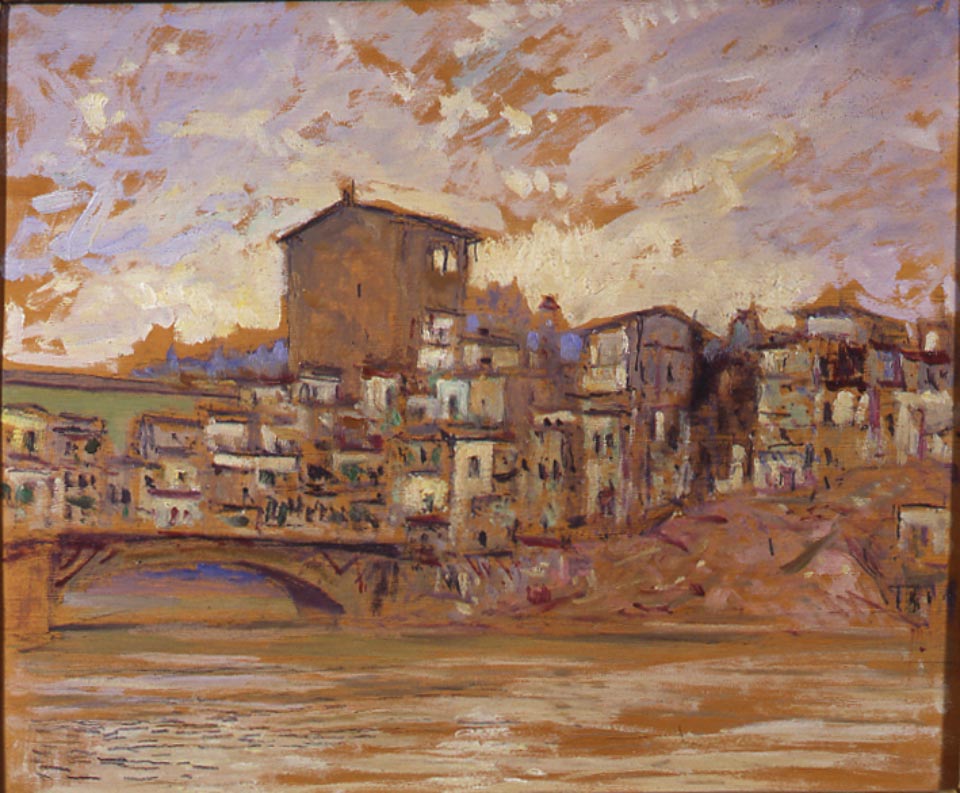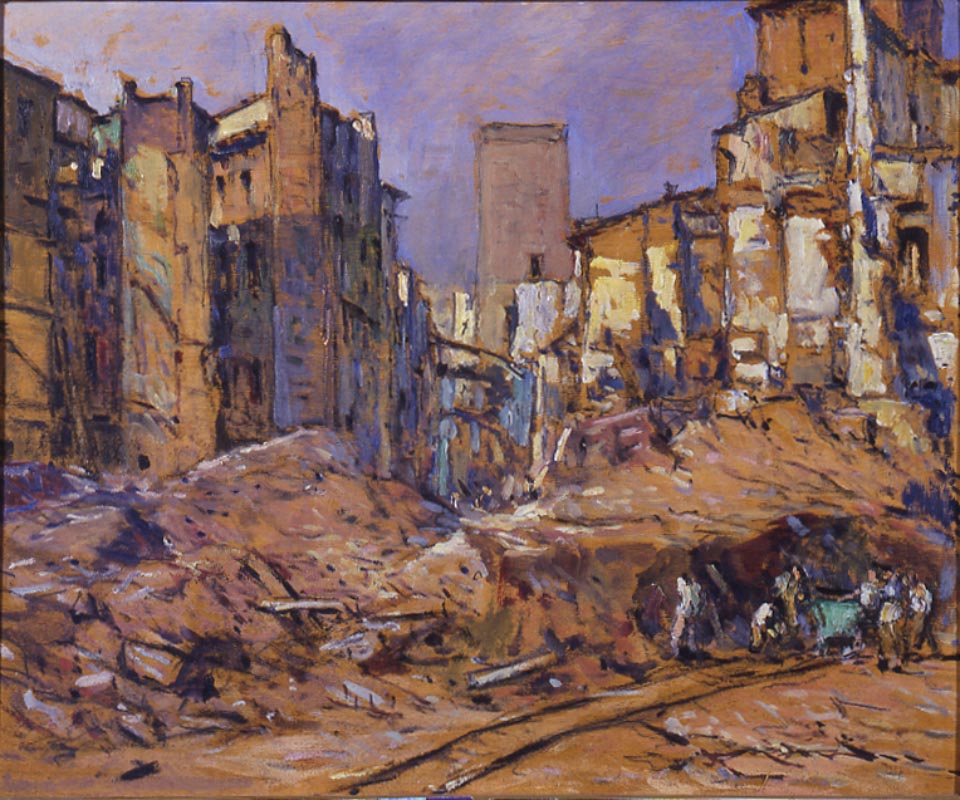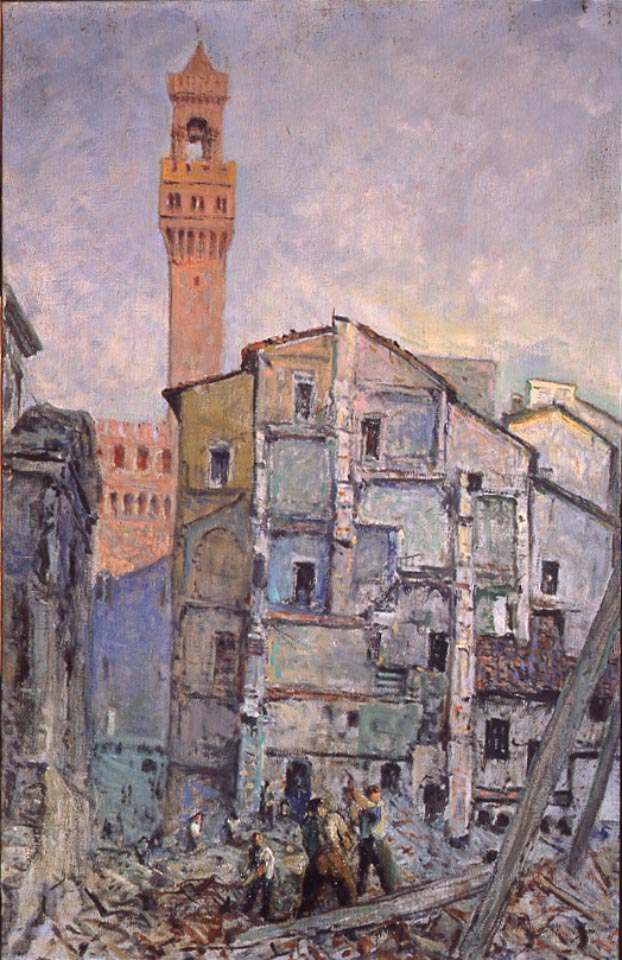Ruins of Florence
Series of bridges destroyed by the war in 1944| City of Florence Collection
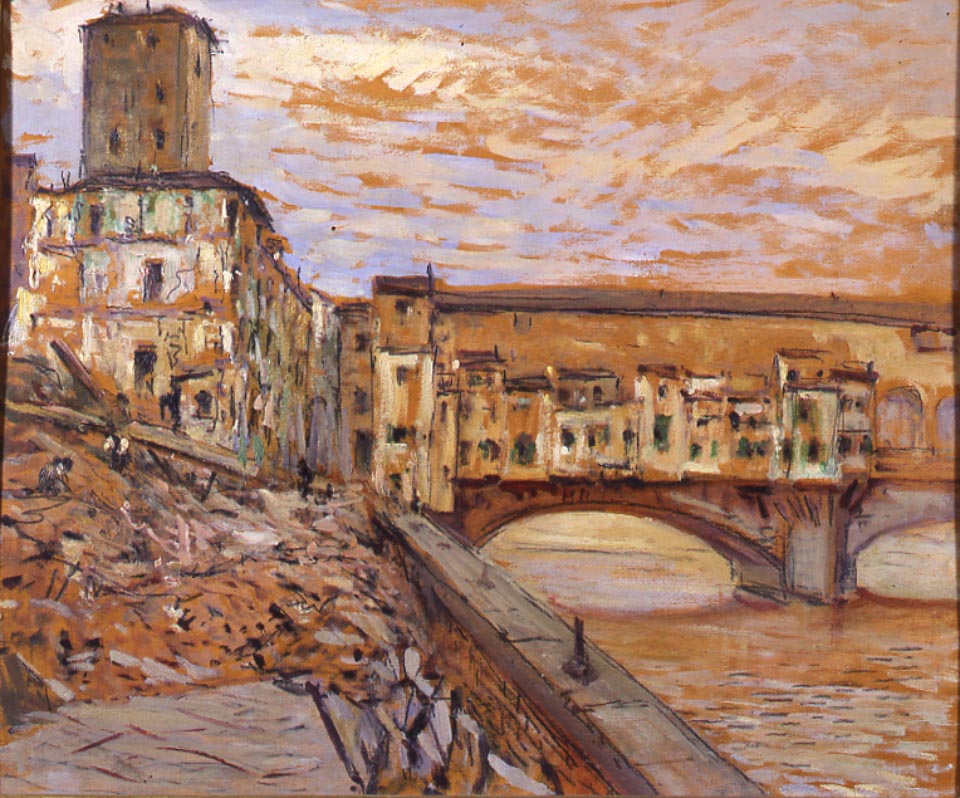
During WW2 both the Germans and the Allied Anglo-American forces caused deep wounds to the city of Florence, both in the historic center and the areas near the railway junctions. Air raids and destruction took place between the end of ’43 and September ’44. When he returned to Florence after his evacuation to Prato, Galileo Chini found the city violated by war.
The railway hub of Campo di Marte and via Mannelli, the Boulevards, Piazza della Libertà and other areas were struck by the Allies with seven successive raids starting in September 1943 to block the movements of the Germans. But it was the German destruction of ’44 on the bridges and in the city center that produced the most tragic wounds for the population: towers and noble palaces, the Lungarni, the Medieval and Renaissance city center … everywhere rubble and despair.
The most affected areas were those along the Arno. The fiercest attack took place on the night of August 3, 1944 when the Nazis systematically destroyed all the bridges of Florence, to prevent passage of the Allied forces.
Only Ponte Vecchio was saved: the reasons are not known; perhaps they considered the bridge was too narrow for American tanks, or perhaps – it is said – it was an unknown hero who in the night defused the mines on the bridge; or still; others believe that it was the Germans themselves who spared the bridge to save its beauty and historical value. Whatever the truth, Ponte Vecchio remained intact, but the areas around the bridge were destroyed, creating huge piles of rubble to block the way: Por Santa Maria, part of the Lungarno Acciaioli, via Guicciardini, via dei Bardi and Borgo San Jacopo, were hard hit, images that remained indelible in the eyes and soul of Galileo Chini upon his return to the city.
Incredulous of so much cruelty – as can also be seen from his letters preserved in the Archive – Chini began to document the destruction with drawings and paintings: almost monochrome works, with only the colors of the rubble.
Yellow, black, brown, the reddish clay color of ancient bricks that had built over centuries the symbols of Florentine history: the beautiful towers of the Ridolfi and the Rossi-Cerchi families and that of Parte Guelfa, the palaces of the Bardi and Mannelli families, the facade of Palazzo Guicciardini and many others. Above the ruins the sky is white, like a shroud covering death; the fast, quivering and broken brushstrokes express the artist’s urgency to grasp as if in a reportage his feeling of dismay in the face of destruction. With his painting and drawings Chini depicts the most battered areas of the city, and also the Bailey Bridge set up in no time by the Americans to bring the two divided parts together.
Aware of the historical importance of these paintings, already in 1945 Chini wanted to donate a large part of them to the Municipality of Florence, which now owns fifteen paintings. Thirteen paintings depicting: via Vacchereccia with the background of Palazzo Vecchio, the houses of via de’ Bardi, the houses of Borgo San Jacopo, the Santa Trinita bridge seen from the Acciaioli river bank, the church of Santo Stefano and adjoining buildings, the towers and rubble of Borgo San Jacopo, the stump of via de’ Bardi, via Guicciardini, the towers of via Por Santa Maria, via Por Santa Maria, the Ponte degli Orafi, the Lungarno Acciaioli and the houses of the Vicolo del Buco. Two more paintings, purchased by the City at a later time, depict Ponte Vecchio.
The paintings are now part of the municipal collection in the former Historical-topographic Museum “Firenze com’era” and are kept in the warehouses of the Musei Civici Fiorentini. They have only been exhibited at temporary exhibitions and are therefore not visible to the public at the moment.
Curated by Claudia Menichini
Grateful for the collaboration Musei Civici Fiorentini
